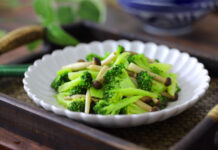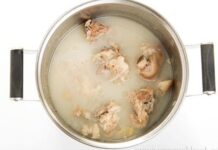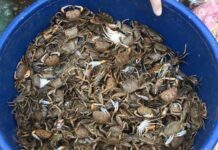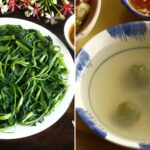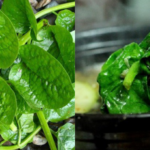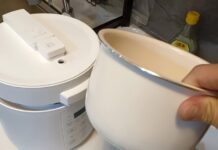Water spinach, or morning glory, is a popular vegetable in many Asian countries. It is a delicious and versatile vegetable that can be cooked in a variety of ways, including boiling, stir-frying, and salads. Water spinach is packed with nutrients, including vitamins A, B, and C, as well as calcium, phosphorous, and especially iron. It offers a plethora of health benefits, such as detoxification, diabetes prevention, and cardiovascular health support.

However, water spinach is also one of the vegetables most susceptible to lead contamination. So, how can you ensure it’s safe to eat?
**Identifying Lead Contamination in Water Spinach:**
– **Leaf Color and Texture:** Water spinach contaminated with lead often has dark green or blackish leaves due to the absorption of heavy metals, including lead. The stems are thicker than usual, very soft, and produce excessive bubbles when rinsed.
– **Boiled Water Spinach Test:** After boiling clean water spinach, squeeze some fresh lemon juice into the broth. It should turn slightly yellowish and become a bit clearer. This is because the acid in the lemon juice breaks down the green pigment and changes the color. In contrast, when you add lemon juice to water spinach contaminated with lead, the color remains largely unchanged.
– **Taste:** Water spinach contaminated with lead often has a distinct astringent taste. In comparison, fresh water spinach should leave a sweet aftertaste.
**What Happens If You Consume Lead-Contaminated Water Spinach?**
Consuming excessive amounts of lead-contaminated water spinach can have detrimental effects on your health. Lead absorbed into the bloodstream accumulates in various body tissues and organs, causing health issues specific to those organs. In children, acute lead poisoning can lead to seizures, coma, and vomiting. Chronic lead poisoning is harder to detect but can result in stunted growth and reduced intelligence in children.
While adults may not exhibit immediate symptoms, long-term exposure to lead can cause bad breath, jaundice, constipation, joint pain, and an increased risk of miscarriage in pregnant women.

**Tips for Choosing Safe and Delicious Water Spinach:**
– Avoid water spinach with abnormally thick stems. Opt for stems that are about the thickness of a dining chopstick.
– Be wary of overly lush and vibrant green water spinach. A healthy bunch should have a normal green color and crisp leaves.
– Pay attention to bubbles when rinsing the vegetable. If you see excessive bubbles, especially green-tinted ones, it indicates the presence of dishwashing liquid or other detergents.
– Choose water spinach with moderate freshness, smaller stems and leaves, and a normal green color. These tend to have sufficient organic matter and are generally safer to consume.
– Before cooking, thoroughly rinse the water spinach multiple times with clean water and soak it in salted water for a few hours to reduce any remaining chemical residue.
By following these simple tips, you can enjoy the delicious and nutritious water spinach while minimizing the risk of lead contamination.











